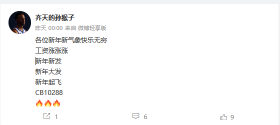Ah, simply reference on single engine carrying around 12-15 tons instead of two carrying around 25-30.I don't quite understand what you mean by "much less of aircraft"
When we add a tanker into the equation, 3t of fuel space for a single 13t engine is just as comfortable as 6-7t of fuel for two. But for tanker it is a world of difference.
J-10-sized aircraft(referring to F-16 here) can be mostly serviced from the ground with simple and readily available ground equipment. Lesser number of people immediately able to access whatever is necessary, faster. Fast weapon load from a simple elevating cart. Etc. It isn't Gripen level of simple, but it's reasonable.And I don't understand why a J-10 would be able to rotate faster than a larger fighter.
You would be operating from the same airbase (and distance) and loading the same number of weapons.
Su-27...one needs to stay under it to feel how huge this m-lover actually is. All service operations take much longer - not just because the amount of service is twice(or more) over, but because technicians literally need to reach every single service port. Loading weapons is also more annoying and time-consuming. It's more annoying to navigate on the ground. Etc.
Overall, flanker(and F-15) service in the modern aviation world is kinda (in)famous - the only reliably more annoying fighter a/c is the f-22.
Flankers were designed under requirements mostly written by the Soviet Air Defense. That meant good, well-equipped, safe airfields far in the rear, and no pressure to fly 6 sorties per day. They require lots of attention - but even giving them this attention isn't easy.
On top of that - J-16 is a twin-seater only.
Long-range operations per se don't favor large fighters - for the reasons listed above.And long-range operations is where the bulk of future Chinese Air Force operations will be.
Long-range independent operations do - but they're a relative minority.
And, frankly speaking, majority of ops *overall* are never long-range operations. Even in PTO - even when it can be done, it's better to be done only when necessary and for as short as possible. Force operating on a shorter leg has an advantage.
The problem is the number of flights(per time)/price of operation.But if we get to the point where the Chinese Air Force has to start standing up entirely new airbases and brigade personnel for J-20 units, it's likely more cost-effective to retire a J-10C unit and replace it with J-20. The key metric being [long-range air-to-air combat capability versus cost] and it is still able to perform a CAP/DCA mission.
Heavy fighters are lesser at either aspect...


